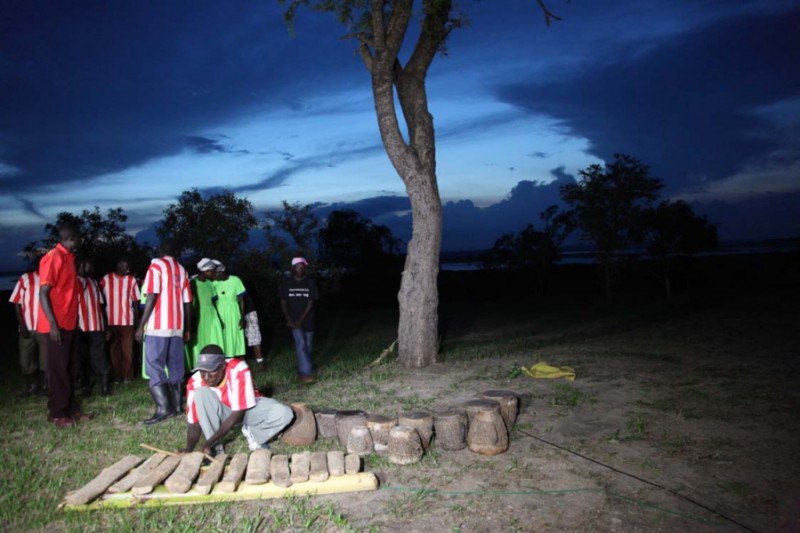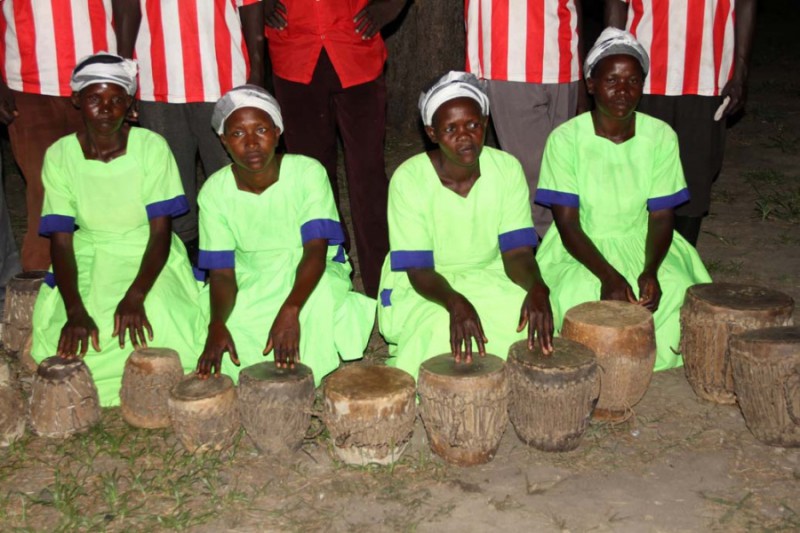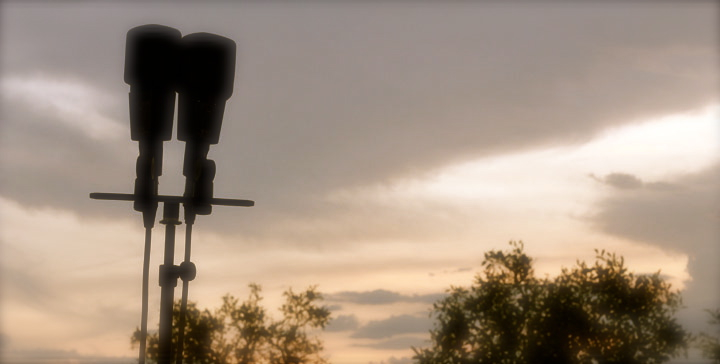Well, this was different. After driving late at night last night, we met and realized we couldn’t record in Pakwach in the morning and Lira by the afternoon. So with a little scrambling we managed to invite our second group of the day, Cieng Dwong, to travel to us from their village Alebtong. All well and good, but our poor travelers didn’t arrive with us until about 1900, by which time it was pretty dark – okay, very dark.
The good news is we have good lighting equipment. The bad news, good lights attract bugs. These are Nile bugs, mind you, so in addition to the millions of little moths you’d expect, we had bat size critters, from very big grasshoppers to fairly intimidating beetles. Our recording sessions were part Singing Wells and part BBC wildlife documentary. We reassured ourselves that at least the bugs that whacked into you were unlikely to be mosquitos.
But the night gave us a new insight as well. Many of the songs we record were written for the camp fire. The dances go around a campfire, the characters lurch in and out of the fire light, and the flickering flames add mystery and drama to the performance. For some of the music, and we thought about Oramba yesterday, the song are fireside songs. Oramba is a hunter and the song is about the village wondering whether he will come back with a kill. Oramba is fierce, running around with a spear, lunging at the audience. Think about what that would be like for the children as Oramba drifts into the shadows only to fly out of the darkness at different points of the circle? So, we vow to do more nighttime recording. Maybe with mosquito netting.
Cieng Dwong
Tonight’s group was fantastic, especially given the full day of travel. They had about 15 bul (drums) and 2 drummers and a smallish ndara (xylophone). Their lead male singer was about 6 foot five and commanded the whole group and the growing audience with a loud voice, great dance and fun drumming. They sang Myeli, Wuon Nyaci, Cwara Rac, Ngeta Romo, Atyekedec Gen, and Apako Orang’a. Each of their songs followed a rough pattern: the lead singer sang out the main theme of the song and the drumming started. The dance troupe than sang and danced around the drums in increased density and at one point there was a massive ‘thwump’ as the whole group jumped up and down at the same time to the beat. The combination of 15 drums and 15 dancers all thwumping was fantastic and the night added to the magic as the jumped in and out of the light.
We followed the performances with some magic moments, first on ndara and then bul. To be frank, these weren’t as good as their parts during the songs. We often find this the case and it shouldn’t be surprising. Most good musicians play off the band and if you ask them to play the song just with their part find it all a bit strange. So too for African village groups. They don’t go into studios and ‘lay down their track’ in some great over-dubbing session. They perform with a troupe, and they feed off of and help drive the dancing and the other instruments. The song Apako Oranga had an amazing Ndara riff and we wanted to capture it on its own. But the subsequent magic moment session lacked something – our friend was a musician in a band, not some studio session guy ‘mailing in his over-dub.’ Sometimes it works. Sometimes it doesn’t.
And with that, brushed the bugs from our hair and clothes, pulled some beetles from the camera bags and had dinner. Tomorrow is a driving day as we head to our next location…
Jimmy
(Fort Murchison, near Pakwach)



